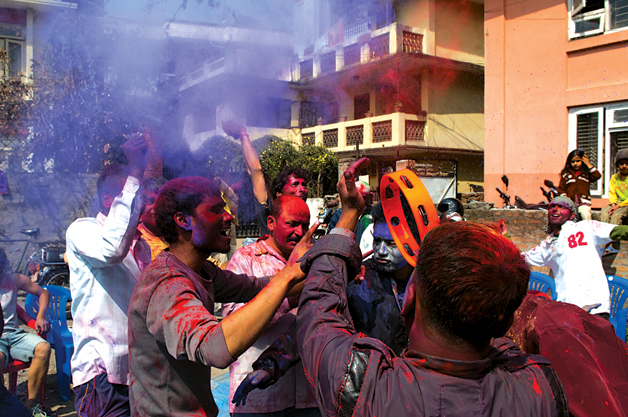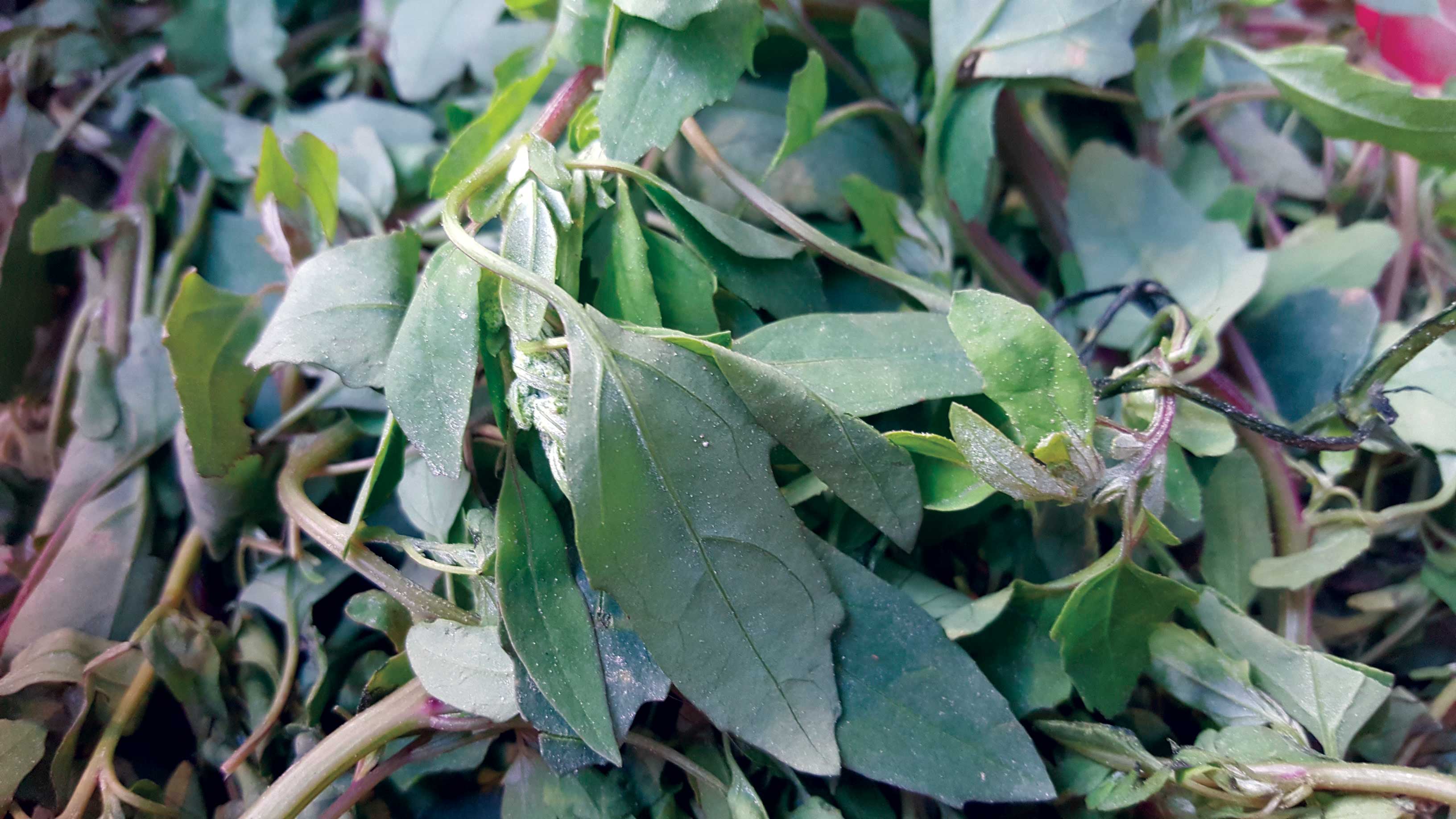
Walking around Basantapur on Holi might seem like an authentic way to enjoy the festival, trying to avoid water bombs and being smeared with synthetic coloring while enjoying the uplifting effect of a dose of bhang (a close cousin of marijuana).
Unbeknownst to many is the celebration of Holi in a markedly different style, right here in the valley.
The air, thick with abhir (colored powder) and raucous singing, the Terai-Madhesh Democratic Party hosted their annual Holi celebration at their headquarters in Anamnagar, drawing the attention of many curious neighbors and passersby unfamiliar with the traditions of the Tarai.
Traditionally, Tarai regions celebrate the festival a day later.
“We have two legends of Holi in the Tarai,” explained Krishna Kumar Singh, Central President of the Tarai-Madhesh Youth Front.
According to Krishna, the story dates back to ancient times when the powerful King Hiranyakasyap, who rejected god, attempted to kill his son Bhaktaprahlad by casting him into the fire. Sharing the fire was the King’s sister, Holika, who was apparently granted immunity to the flames by the gods. In this tale, the public was divided in their support for the god-fearing Bhaktaprahlad and the King’s sister. Ultimately, Holika perished in the flames and the King’s son survived, which is key to the Tarai celebrations taking place a day after.
“People of the Tarai are supporters of Bhaktaprahlad, so we celebrate the death of Holika the day before, and the day after is to commemorate the victory of Bhaktaprahlad,” explained Krishna.
The liberal use of colored powder is linked to the legend of Ramayana, when Ram returned victorious to his city of Ayodhya and was showered with rang (colors).
In the backyard of the Terai-Madhesh Democratic Party headquarters, Tarai natives who could not return to their homes in south Nepal gathered to celebrate Holi in their own fashion. Songs were belted out with vigor in Maithili, and new arrivals to the party were literally assaulted by buckets of colored water and powder in red, yellow, green, and purple hues.
However, festivities were muted compared to the traditions of the Tarai.
“The day before Holi, we collect wood and make bonfires, celebrating the death of Holika,” recalled Krishna.
On Holi itself, children touch their foreheads to their parents’ feet in reverence. Later, clay pots filled with colored water are strung up high in between street poles and tipped over as people sing and dance in circles below.
“We mostly sing songs of the victory of Bhaktaprahlad, as well as other gods. For us, it’s a day of celebration of all the gods,” said Krishna.
To the Tarai people, the style of celebrating Holi in Kathmandu is unusual.
Krishna said: “It’s very modern, much like the festivals in Europe. The original culture of Holi is still in the Tarai, probably nowhere else in Nepal.”
As the party wore on, nearly a hundred people filled the small backyard, which was documented by several media outlets in the valley.
“Most Tarai natives don’t want to stay here as they want to celebrate with their own people back home. Some instruments are also not available here, but we tried our best to organize this party for those who can’t go home. They feel like they’re in the Tarai!”










